What’s Up?
On Friday morning, I worked on preening adult Sandhill Cranes in early morning light but did not come up with anything memorable.
It’s amazing how well relatively small price drops can work when selling used gear. I was glad to learn yesterday of the sale of Anita North’s 80-400 VR, the two high-shutter-count D850s, and her two teleconverters — the TC-E17 and the TC-E20. It is a buyer’s market and there are lots of great buys on the Used Gear Page here.
The forecast for today –Saturday 4 JUNE 2020 — is for partly to mostly cloudy with a blessedly and relatively low high temperature of 90 degrees. With scattered thunderstorms of course. I will be concentrating on flowers this morning.
You will need to scroll down below Image #1 to see the four featured images. If you are not too busy barbecuing, please leave a comment and let us know which is your favorite image and why.
BIRDS AS ART
BIRDS AS ART is registered in the U.S. Patent and Trademark Office.
SONY e-Guide Discount Program
Purchase a (new) qualifying SONY camera body (a7r iii, a7r iv, a9, a9 ii) from Bedfords or using a BIRDS AS ART B&H affiliate link, and you will receive a $40 discount on the SONY e-guide. Purchase a (new) SONY 200-600mm G lens from Bedfords or using a BIRDS AS ART B&H affiliate link, and you will receive a $25 discount on the SONY e-guide. Purchase a (new) SONY 600mm f/4 GM lens from Bedfords or using a BIRDS AS ART B&H affiliate link, and you will receive a free SONY e-guide with one or two videos.
Please send your Bedford’s or B&H receipts to me via e-mail to receive your discount and your ordering instructions. Folks purchasing from Bedfords and using the BIRDSASART code will save $50. Folks sending their B&H receipts may need to wait a few days to have their purchases confirmed. Folks using Bedfords will have their purchases confirmed immediately.
|
|
|
99 sold to rave reviews. The SONY e-Guide by Patrick Sparkman and Arthur Morris |
The Sony Camera User’s e-Guide (and Videos)
Click here to purchase the guide with one Camera Set-up Video. Be sure to e-mail us by clicking here to specify your camera body so that we can send you a link for the correct video.
Click here to purchase the guide with two Camera Set-up Videos. Be sure to e-mail us by clicking here to specify your two camera bodies so that we can send you links for the correct videos.
Click here to learn more about the SONY e-Guide.
|
|
|
This image was created on 21 JUNE 2020 at Indian Lake Estates. Working from my SUV I used the handheld Sony FE 200-600mm f/5.6-6.3 G OSS lens (at 248mm) and the blazingly fast AF King, the Sony Alpha a9 II Mirrorless Digital camera body. ISO 400. Exposure determined by Zebras with ISO on the rear wheel: 1/1250 sec. at f/10 in Manual mode. AWB at 7:58am on a sunny morning. Tracking Flexible Spot M AF-C was active at the moment of exposure and performed superbly. Image #1: Great Egret immature standing on dock |
Working off Sun Angle …
I stopped my SUV about a foot or two short of being on sun angle. Note that the shadows of the bird’s legs (and the pole) are angled about 10-15 degrees to the left. Before you scroll down to see today’s four featured images, try to figure out why I did not get right on sun angle and leave a comment.
Money Saving Reminder
If you need a hot photo item that is out of stock at B&H, would enjoy free overnight shipping, and would like a $50 discount on your first purchase over $1000.00, click here to order and enter the coupon code BIRDSASART at checkout. If you are looking to strike a deal on Canon or Nikon gear (including the big telephotos) or on a multiple item order, contact Steve Elkins via e-mail or on his cell at (479) 381-2592 (Eastern time) and be sure to mention your BIRDSASART coupon code and use it for your online order. Steve has been great at getting folks the hot items that are out of stock at B&H. Those include the SONY a7r IV, the SONY 200-600, the SONY 600mm f/4 GM, and the Nikon 500mm PF. Steve is eager to please.


Gear Questions and Advice
Too many folks attending BAA IPTs and dozens of photographers whom I see in the field and on BPN, are–out of ignorance–using the wrong gear especially when it comes to tripods and more especially, tripod heads… Please know that I am always glad to answer your gear questions via e-mail. Those questions might deal with systems, camera bodies, accessories, and/or lens choices and decisions.
|
|
|
This image was created on 21 JUNE 2020 at Indian Lake Estates. Working from my SUV, I used the Induro GIT 204/FlexShooter Mini-mounted Sony FE 600mm f/4 GM OSS lens, the Sony FE 2.0x Teleconverter, and the blazingly fast Sony Alpha a9 II Mirrorless Digital camera body). ISO: 400. Exposure determined by Zebras with exposure compensation on the rear wheel: 1/800 sec. at f/9 in Manual mode. AWB at 7:45:05am on a sunny morning … Tracking Flexible Spot (S) AF-C. The AF point tracked the upper left corner of the bird’s eye. Image #2: Great Egret immature head and shoulders portrait |
Young-of-the-Year Great Egret
You can tell that this is an immature bird that hatched a few months ago by the dark mark along the distal end of the upper mandible. Analyzing the situation reveals that this is not the world’s most beautiful young Great Egret; note the sort of dirty brown smudges on various parts of the plumage, especially on the chin and the surrounding area. But …
|
|
|
This image was created on 21 JUNE 2020 at Indian Lake Estates. Working from my SUV, I used the Induro GIT 204/FlexShooter Mini-mounted Sony FE 600mm f/4 GM OSS lens, the Sony FE 2.0x Teleconverter, and the blazingly fast Sony Alpha a9 II Mirrorless Digital camera body). ISO: 500. Exposure determined by Zebras with exposure compensation on the rear wheel: 1/1000 sec. at f/10 in Manual mode. AWB at 7:54:06am on a sunny morning … Wide AF-C. The system grabbed the upper center of the upper mandible, right on the same plane as the bird’s eye. Image #3: Great Egret immature preening a neck feather |
But!
The bird, however, was doing all sorts of neat stuff so I stayed with it for a good half hour. The trick with tall preening-the-neck images like this is to have the bird’s face and bill perfectly parallel to the back of the camera (and the sensor). And the icing on the cake for all preening images is getting a frame or two showing the bird with a feather or two in its bill. The SONY a9 ii’s amazing 15 frames per second makes that a lot easier to do than when working with slower frame-rate bodies.
|
|
|
This image was created on 21 JUNE 2020 at Indian Lake Estates. Working from my SUV, I used the Induro GIT 204/FlexShooter Mini-mounted Sony FE 600mm f/4 GM OSS lens, the Sony FE 2.0x Teleconverter, and the blazingly fast Sony Alpha a9 II Mirrorless Digital camera body). ISO: 500. Exposure determined by Zebras with exposure compensation on the rear wheel: 1/1000 sec. at f/10 in Manual mode. AWB at 7:55:17am on a sunny morning … Wide AF-C. The system grabbed a spot just in front of the base of the lower mandible. Image #4: Great Egret ??? |
???
I am not sure if this image shows the bird yawning or jerking its head around while trying to eject a pellet or bolus. Herons, egret, gulls, shorebirds, and raptors will often be seen coughing such balls of indigestible materials made up of small bones, teeth, shells, feathers, fur, etc. I did not see this bird regurgitate anything.
Eye Replacement
In this frame — my favorite from a sequence of about 15 images, the nictitating membrane covered the bird’s eye. I grabbed a fully open eye from another frame via a small Quick Mask. Then I placed the new eye layer on this image by reducing the opacity to 50%, rotated, resized, and warped the layer, and refined it to perfection all as detailed in The BIRDS AS ART Current Workflow e-Guide (Digital Basics II) and in APTATS I & II — can save $15 by purchasing the pair!
|
|
|
This image was created on 21 JUNE 2020 at Indian Lake Estates. Working from my SUV, I used the Induro GIT 204/FlexShooter Mini-mounted Sony FE 600mm f/4 GM OSS lens, the Sony FE 2.0x Teleconverter, and the blazingly fast Sony Alpha a9 II Mirrorless Digital camera body). ISO: 500. Exposure determined by Zebras with exposure compensation on the rear wheel: 1/1000 sec. at f/10 in Manual mode. AWB at 7:55:24am on a sunny morning … Center Zone AF-C. Here, the system grabbed a spot an inch in front of the base of the upper mandible. Image #5: Great Egret scratching |
Horizontal/Vertical (H-V) AF Area Modes
Noting how quickly the behaviors changed — Images #3, 4, & 5 were created in a span of just 78 seconds — folks might wonder how I was able to change the AF Areas as needed to best keep up with the action. First off, as with Canon and Nikon, you can set your SONY camera to remember one AF Area for horizontal shooting and one other for vertical shooting! Actually, with SONY, the camera can remember two AF Areas for vertical shooting depending on whether you rotate the lens in a clockwise or counter-clockwise direction. Your camera may or may not offer this feature.
To change the AF Area quickly, Patrick and I use the default button: C2. One of the great strengths of the SONY e-Guide and Videos is the lengthy discussion of the numerous and varied SONY AF Areas and dozens of examples in the various galleries.
If In Doubt …
If you are in doubt about using the BAA B&H affiliate link correctly, you can always start your search by clicking here. Please note that the tracking is invisible. Web orders only. Please, however, remember to shoot me your receipt via e-mail.






Please Remember to use my Affiliate Links and to Visit the BAA Online Store 🙂
To show your appreciation for my continuing efforts here, we ask, as always, that you get in the habit of using my B&H affiliate links on the right side of the blog or Bedfords, for all of your photo and electronics purchases. Please check the availability of all photographic accessories in the New BIRDS AS ART Online Store, especially the Mongoose M3.6 tripod head, Wimberley lens plates, Delkin flash cards and accessories, and LensCoat stuff.
As always, we sell only what I have used, have tested, and can depend on. We will not sell you junk. We know what you need to make creating great images easy and fun. And please remember that I am always glad to answer your gear questions via e-mail.
I would, of course, appreciate your using our B&H affiliate links or Bedfords for all of your major gear, video, and electronic purchases. For the photographic stuff mentioned in the paragraph above, and for everything else in the new store, we, meaning BAA, would of course greatly appreciate your business. Here is a huge thank you to the many who have been using our links on a regular basis and those who regularly visit the New BIRDS AS ART Online Store as well.
Be sure to like and follow BAA on Facebook by clicking on the logo link upper right.
Typos
In all blog posts and Bulletins, feel free to e-mail or to leave a comment regarding any typos or errors. Just be right :).

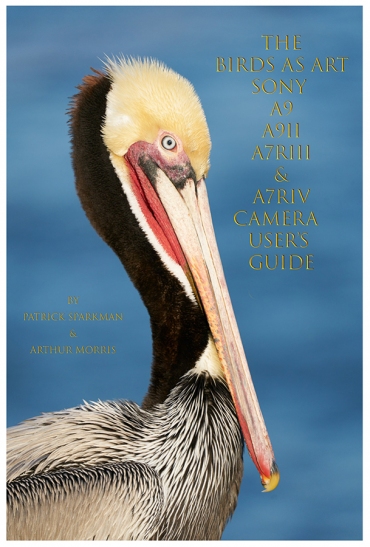
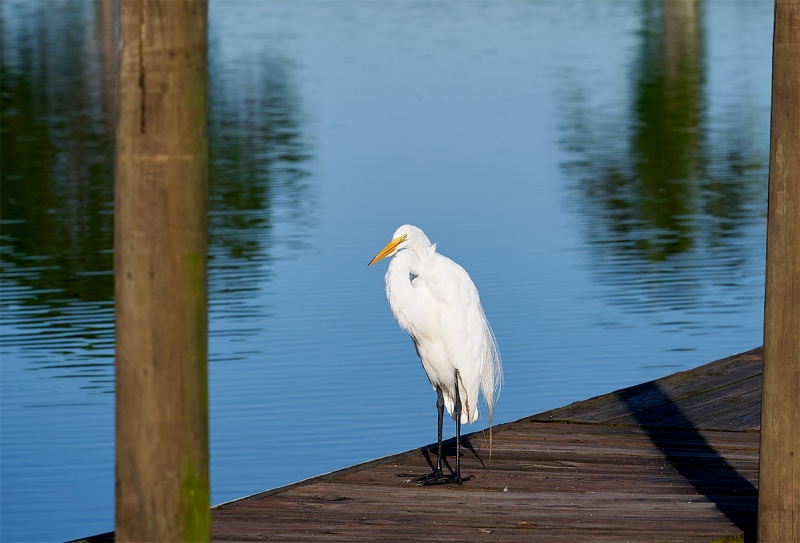

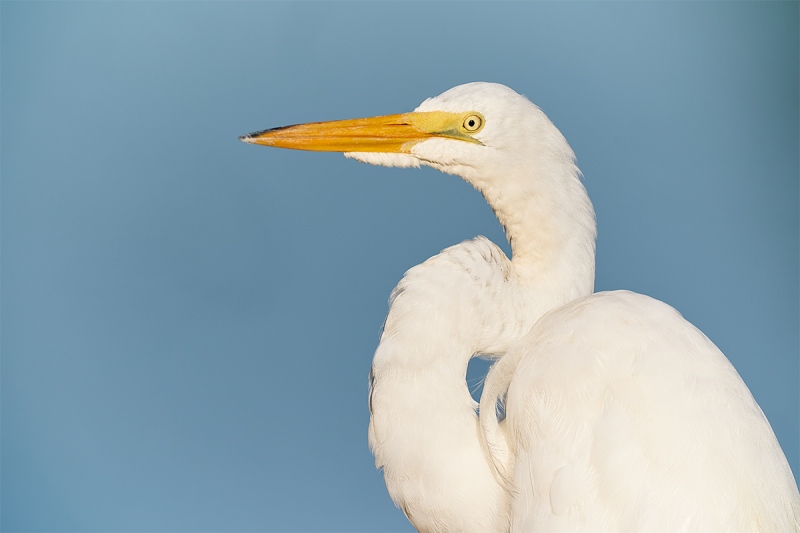
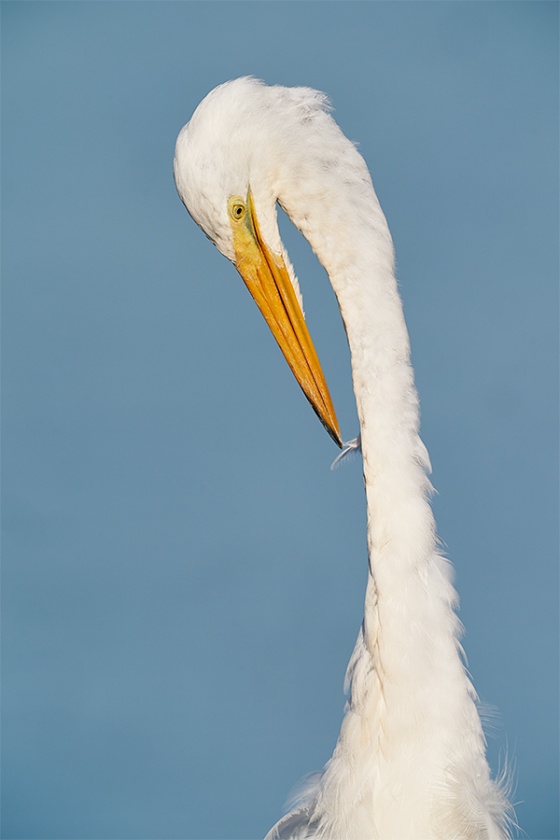
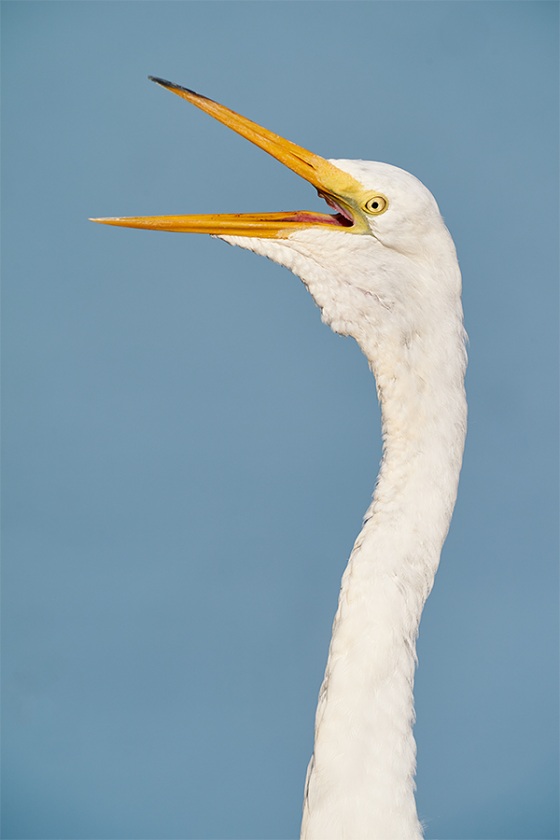
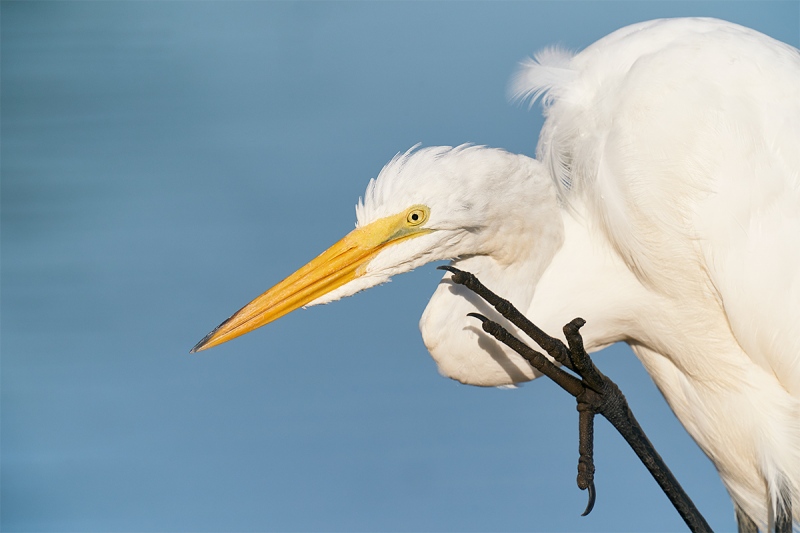













Artie: Thanks for these, and happy Fourth of July.
Thanks and ditto, David. But it’s Groundhog Day here; every day is pretty much the same.
The temperature might have reached 70 here on Nantucket today.
It was 104F in some places in Ontario in the past few days! I’d rather be on Nantucket!
I have two favorites, the scratching egret and the one with the open mouth.
Thanks for sharing those.
The scratching one would be my favorite alone except for the eye; I think, most animals, including birds, close their eye when scratching their face like that, so the wide-open eye looks just slightly odd. I might not have noticed if you’d not mentioned it.
David, David, David. Yes, many animals and birds protect their eyes when scratching. But if you go back and read carefully you will see that I replaced the eye in Image #4 … So at times, they keep their eyes wide open, unprotected by the nictitating membrane. That is one of the reasons that I have no qualms about replacing nictitating-covered-eyes. If you think that I am pulling your foot, I’d be glad to send you the RAW file 🙂
As for why you were off sun angle, first, let me say to Gary Prestash that moving your point of view cannot affect the shadow of a post, so if the post isn’t casting a shadow on the bird from the viewpoint where you took the photo, moving wouldn’t make it cast a shadow on the bird.
First off, moving one’s point if view does affect the shadow cast by the post. If I moved my vehicle forward so that the sun was right behind me and pointed at the post, the shadow of the post would disappear behind the post. If I moved my SUV backwards, the angle between the post and its shadow would increase. As for the second part of your statement, I was confused at first but I believe that if I moved the car back far enough, the shadow of the right hand post would have fallen on the bird (even if our view of the bird would have been blocked by the left-hand post. Whew! That taxed my brain cells 🙂
But it would wreck the composition, I think, by putting the post on the right too close to the bird.
I am confused again 🙂 Please understand that when framing Image #1 I was thinking of it only as an educational image: I was not at all concerned with any compositional or artistic aspects of the photograph.
with love, artie
I like the scratching egret. Unusual.
Thanks Anthony. I have many lots of scratching egrets at herons 🙂
a
The shadow of the rightmost post would have been on the bird?
Not at all. As I said to Warren, if I pulled forward to get right on sun angle there would have been nothing between the bird and me …
a
My two favorites of these egrets are the preening one with that delicate feather in bill and the scratching one. I like the shadow of the scratching foot. And that big black foot is so contrasting to the bird it really grabs the eye. And… the composition really emphasizes the big black foot. I always like behavior too.
Thanks, Elinor, for sharing your favorties.
a
I think that there are 3 reasons why you stopped short of sun angle. (1) the post on the opposite side of the dock would constrain your shooting view of the bird;
(1) is incorrect. As I said elsewhere here, if I pulled forward to get right on sun angle there would have been nothing between the bird and me. And since I was working at 1200mm, I would not have been constrained in any way!
(2) that same post would cast a shadow that might cover part of the bird;
(2) is incorrect. As I said elsewhere here (and above!), if I pulled forward to get right on sun angle there would have been nothing between the bird and me.
and (3) you wanted the blue water behind the bird as your b/g, not the darker shadowed water.
(3) is 100% correct and is the answer that I was looking for.
with love, a
I enjoyed the young egret images!
Thank you Pat. And thanks for using my B&H link for your new Canon 400 DO II lens! It will serve you well at the new pond.
love to you both,
a
I agree with the tree reflection. At first I thought about the framing with the posts of the pier, but the reflections are more significant and left reflection would have been right at the birds head.
You are confused. What left reflection? Assuming that you meant the shadow of either post, you are incorrect. If I pulled forward to get right on sun angle there would have been nothing between the bird and me … But, I would have had the dark background that I was trying to avoid!
a
Artie,
You chose to be slightly off sun angle because you wanted to avoid the tree reflections in your water backgrounds.
Yes. More simply put, I wanted the blue water background. Notice that in Images #s 2 & 5 that a tiny bit of the dark relflections crept into the sides of the frame.
a